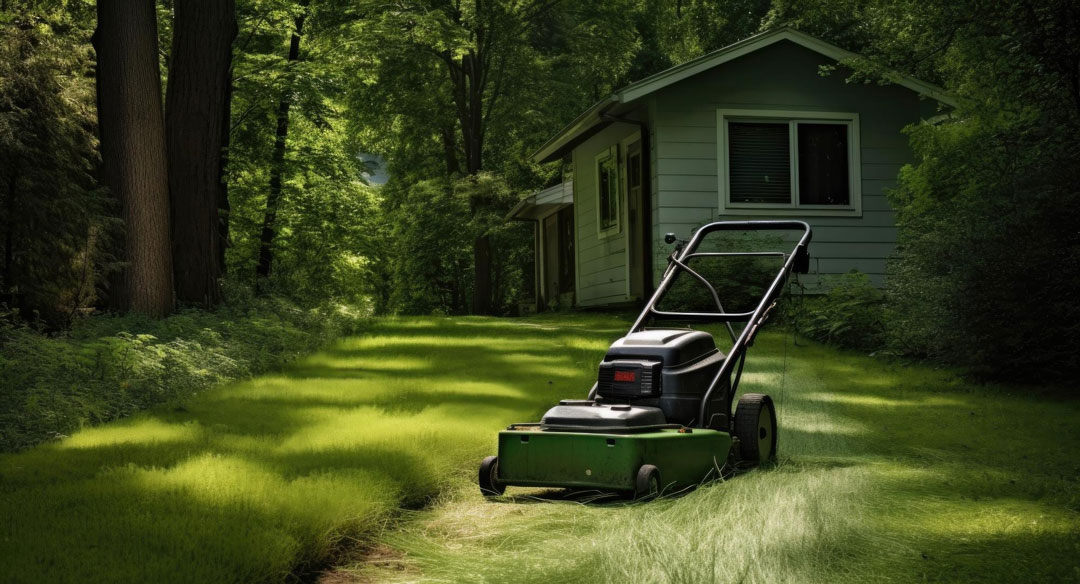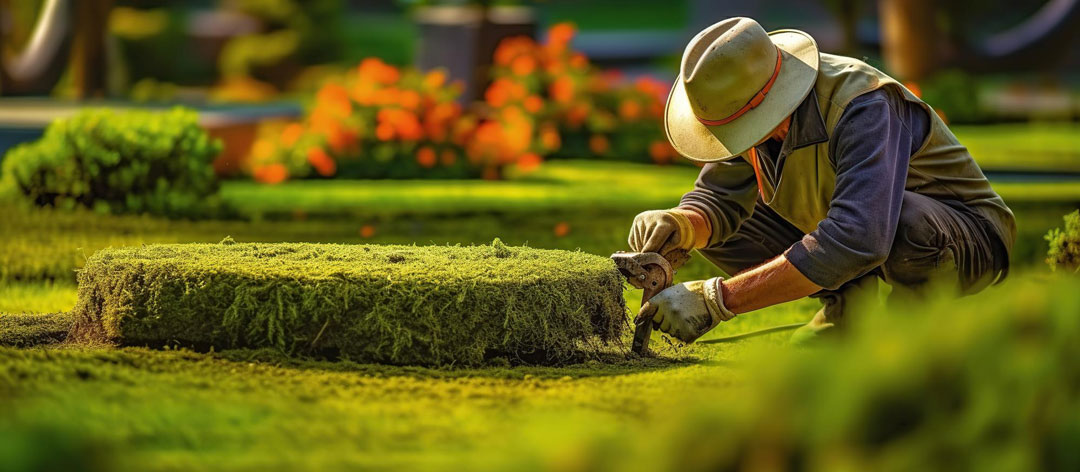As winter slowly comes to an end, it's time to start thinking about rejuvenating your yard for the upcoming spring season. Early February marks a crucial period for lawn care, as it allows you to lay the foundation for a vibrant and healthy yard. By following a few essential lawn care tips during this time, you can ensure that your lawn thrives throughout the year. In this article, we will look into the importance of early February lawn care and provide you with a comprehensive guide on how to achieve a lush and vibrant yard.
Why is early February important for lawn care?

Early February is a critical time for lawn care because it sets the stage for the rest of the year. During this period, the grass is dormant, and the soil is still relatively cold. By taking the necessary steps to care for your lawn now, you provide it with the best chance to flourish when the warmer weather arrives. Early February is the perfect time to focus on soil preparation, weed control, and other fundamental tasks that help create an optimal growing environment for your grass.
Essential lawn care tasks for early February
Soil aeration and fertilization
One of the most crucial tasks in early February is soil aeration. Over time, the soil in your lawn becomes compacted, making it difficult for water, air, and nutrients to penetrate the roots. By aerating the soil, you create small holes that allow for improved circulation and absorption. This process promotes better root growth and helps prevent the buildup of thatch, a layer of dead grass that can suffocate your lawn. After aerating, it's essential to apply a high-quality fertilizer to nourish the soil and provide the necessary nutrients for healthy grass growth.
Weed control
Early February is an excellent time to tackle the weeds that may have taken root in your lawn. Weeds not only compete with your grass for nutrients and water but can also detract from the overall appearance of your yard. To effectively control weeds, consider applying a pre-emergent herbicide. This type of herbicide prevents weed seeds from germinating, giving you a head start in controlling their growth. Additionally, hand-pulling any existing weeds or using a spot treatment herbicide can help eliminate them before they become a bigger problem.
Mowing and clearing debris
Although your grass is dormant in early February, it's important to keep it well-groomed and free from debris. Mowing your lawn at a low setting, around two inches, helps prevent snow mold and allows for better air circulation. Additionally, clearing any fallen leaves, branches, or other debris from your yard prevents them from suffocating your lawn and inhibiting growth. Remember to use a rake or leaf blower to remove debris gently, as harsh movements can damage the grass or soil.
Basic lawn care tips for beginners

Taking care of a lawn may seem overwhelming for beginners, but with a few basic tips, anyone can achieve a vibrant and healthy yard. Here are some essential lawn care tips for beginners:
Regular watering
Proper watering is vital for maintaining a healthy lawn. Aim to provide your grass with about an inch of water per week, either through rainfall or irrigation. Water deeply and infrequently, allowing the soil to dry slightly between waterings. This encourages deep root growth and makes your lawn more drought-resistant.
Correct mowing techniques
Mowing your lawn at the proper height and frequency is crucial for its overall health. Set your mower blades to the recommended height for your grass type, ensuring that you only remove one-third of the grass blade's length at a time. Mowing too short can stress the grass and make it more susceptible to disease and weeds.
Regular fertilization
Fertilizing your lawn regularly provides it with the essential nutrients it needs to thrive. Use a slow-release fertilizer specifically formulated for your grass type and apply it according to the instructions. Avoid over-fertilization, as this can lead to excessive growth and increase the risk of disease.
Preparing your lawn for spring
As early February marks the transition from winter to spring, it's essential to prepare your lawn for the upcoming growing season. Here are some key steps to take to ensure your yard is ready to bloom:
Raking and dethatching
Before the grass starts actively growing, it's crucial to remove any thatch that has accumulated. Thatch is a layer of dead grass and debris that can prevent water, nutrients, and air from reaching the roots. Use a thatch rake or power rake to gently remove this layer, allowing for optimal grass growth.
Overseeding
If your lawn has bare patches or thinning areas, early February is an excellent time to overseed. Overseeding involves spreading grass seed over the existing lawn, promoting denser growth, and filling in any bare spots. Before overseeding, make sure to aerate the soil to create a favorable environment for the new grass seed to take root.
Soil testing and pH adjustment
Testing your soil's pH level is crucial for maintaining a healthy lawn. Most grass types prefer a slightly acidic soil pH, around 6.0 to 7.0. If your soil pH is too high or too low, you can adjust it by applying the appropriate soil amendments, such as lime or sulfur. Testing your soil also helps determine its nutrient content, allowing you to make informed decisions when fertilizing.
Best practices for early spring lawn care
As the weather starts to warm up, it's time to implement best practices for early spring lawn care. Here are some tips to keep your yard looking vibrant and lush:
Regular irrigation
Increasing your watering frequency as the temperatures rise is crucial for supporting the growth of your lawn. Water deeply and thoroughly, ensuring that the soil is moistened to a depth of at least six inches. Be mindful of any watering restrictions in your area and adjust your irrigation schedule accordingly.
Proper weed and pest control
Early spring is a prime time for weeds and pests to emerge. Implement a comprehensive weed control program, including spot treatments and regular inspections to promptly address any issues. Additionally, keep an eye out for common lawn pests, such as grubs or chinch bugs, and take appropriate measures to control their population.
Avoid excessive fertilization
While fertilization is essential for maintaining a healthy lawn, it's crucial to avoid excessive or untimely applications. Applying too much fertilizer can lead to rapid growth, weak grass, and an increased risk of disease. Follow the recommended fertilization schedule for your grass type and adjust based on soil test results.
Tools and equipment for effective lawn care
To achieve the best results with your lawn care efforts, it's essential to have the right tools and equipment. Here are some must-have items for effective lawn care:
Lawn mower
Invest in a high-quality lawn mower that suits the size and terrain of your yard. Choose between a push mower, a self-propelled mower, or a riding mower, depending on your specific needs. Regular maintenance and sharpening of the blades ensure a clean and precise cut.
Aerator
An aerator helps alleviate soil compaction and allows for better air, water, and nutrient circulation in your lawn. Choose between manual or powered aerators, depending on the size of your yard and your preference.
Spreader
A spreader is essential for applying fertilizers, seeds, and other lawn care products evenly. Whether you opt for a broadcast spreader or a drop spreader, ensure that it provides accurate and consistent coverage.
Rake and leaf blower
A rake and a leaf blower are essential for clearing debris, such as fallen leaves or grass clippings, from your lawn. These tools help maintain a clean and healthy environment for your grass to grow.
Hiring professional lawn care services
While many homeowners enjoy taking care of their lawns themselves, hiring professional lawn care services can be beneficial, especially for larger or more complex yards. Professional lawn care providers have the expertise, experience, and specialized equipment to ensure your yard is in top shape. They can perform tasks such as fertilization, weed control, aeration, and more, saving you time and effort.
Conclusion: Maintaining a vibrant yard throughout the year
Early February marks a critical time for lawn care, as it sets the stage for a vibrant and healthy yard throughout the year. By following the essential lawn care tips outlined in this article, you can ensure that your lawn thrives and remains lush and beautiful. From soil aeration and fertilization to weed control and proper mowing techniques, every step you take in early February contributes to the long-term health and vibrancy of your yard. Remember to adjust your lawn care practices as the seasons change and consider hiring professional services when necessary. With dedication and the right knowledge, you can enjoy a vibrant and inviting yard that becomes the envy of your neighborhood.
Let Yardener Help Your Garden Grow!

Yardener has over 3,000 pages of gardening know-how to address your questions. Stuck on an issue? Go to Ask Nancy to get expert answers based on 6,000+ already solved concerns.
Receive our monthly gardening newsletter too for seasonal tips delivered to your inbox. Subscribe today for reliable advice.
Bookmark Yardener as a go-to gardening resource. Reference our posts, ask experts, or get monthly tips through our newsletter. Engage with us and achieve gardening greatness!
Follow us on Social Media for daily tips, quotes or memes:
Facebook, Instagram, Twitter, Pinterest

